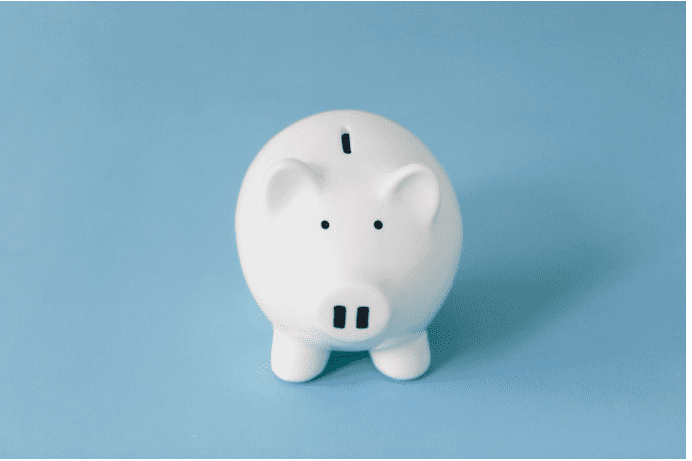What’s the most important quality of an emergency fund? You might think “size,” but that’s not necessarily true. Having a lot of money set aside in an emergency fund is great, but those savings won’t be useful if you can’t reach them quickly. Liquidity is the most important quality when it comes to emergency funds. You need to be able to access your savings right when disaster strikes.
The Mistake of Inaccessible Savings
When your emergency savings aren’t easy to access, you might have to turn to other payment methods to handle an urgent expense. You might turn to one of your credit cards for help. You could charge the expense to the card with the most available credit and then pay down the balance through the monthly billing cycle.
Another option you could turn to is a personal line of credit loan. You could go to a website like CreditFresh to see whether you meet the qualifications for this type of loan. If you meet all of the qualifications, you can fill out and submit an application quickly. It could take you five minutes to do.
With an approved personal line of credit loan, you could request a withdrawal within your credit limit to pay off your urgent expense in a short amount of time. After resolving the issue, you could focus on a loan repayment plan through a monthly billing cycle.
While these options are useful in emergencies, they’re not better than an accessible emergency fund.
Where Shouldn’t You Store Your Emergency Savings?
Stocks and Bonds
While stocks and bonds can be lucrative, they will have to be sold in order for you to access their monetary value. This process will take time — time that you may not have in an emergency.
Cryptocurrency Investments
Cryptocurrency investments present a similar issue to stock and bond investments. You will have to sell your investment for its cash value and then transfer those funds into a bank account. Again, this process can take time.
Another problem that comes with cryptocurrency investments is their volatility. Cryptocurrency can plummet in value at a moment’s notice, meaning you might not be able to cash out the investment and use it for your emergency expense whatsoever.
Certificates of Deposit
A Certificate of Deposit is a desirable savings tool because it typically comes with an annual percentage yield between 3% and 5%. You’re meant to add a lump sum into the account for a set amount of time and let it accumulate interest.
So, why is it not a good place for your emergency savings? A CD effectively locks away your savings until it reaches its maturity date. Depending on the CD you picked, your savings could be locked away for 3 months, 6 months, 1 year, 2 years or even 5 years. You’re not supposed to access those savings until that time has passed — which is incredibly inconvenient for an emergency fund.
Technically, you could withdraw your savings from your CD before it reaches the maturity date. Doing this will negate the growth potential of the account. It will also lead to an early withdrawal penalty.
Where Should You Store Your Emergency Savings?
A Standard Savings Account
A standard savings account is a basic, run-of-the-mill savings tool that you can find at just about any bank or credit union. It has no bells and whistles. It’s simply a safe and convenient storage space for your savings — especially your emergency savings. You can access those savings quickly, either by transferring those funds into a checking account or withdrawing cash from the account through an ATM or bank.
You should know that the interest rates with standard savings accounts are not very high at all. Your emergency savings will not yield much growth over time. The annual percentage yield (APY) for this type of savings account is typically below 1%. If you’d like to help your emergency savings grow faster, you should consider using a savings tool that comes with a higher interest rate.
A High-Yield Savings Account
A high-yield savings account comes with a higher interest rate than a standard savings account. It typically offers an annual percentage yield between 2% to 5%. Much like a standard savings account, you can transfer and withdraw funds from a high-yield savings account when you need to access them. So, this is an excellent option for storing your emergency fund. It’s accessible and it comes with strong growth potential.
One thing that you should know about high-yield savings accounts is that they tend to have minimum balance requirements. If your balance dips below a certain threshold, you may incur a minimum balance fee. In addition, your balance might not accrue interest until it crosses that minimum amount once more.
A Money Market Account
A Money Market Account — sometimes referred to as a money market deposit account — is an interest-bearing account available at banks and credit unions. This type of account typically has a higher interest rate and APY than a standard savings account. You can expect an APY between 2% to 4% with this option.
A Money Market Account combines the features of a checking and savings account. It will come with a debit card and check-writing privileges. When disaster strikes, you will have multiple ways to access your savings to pay off expenses. You could pay with your debit card. You could withdraw cash from your account. You could transfer the funds electronically. Or you could write out a check. This feature makes a Money Market Account a great choice for emergency funds.
You want your emergency savings to be liquid. So, store your emergency fund in the right place!




































